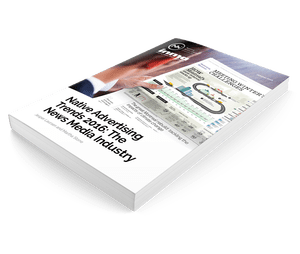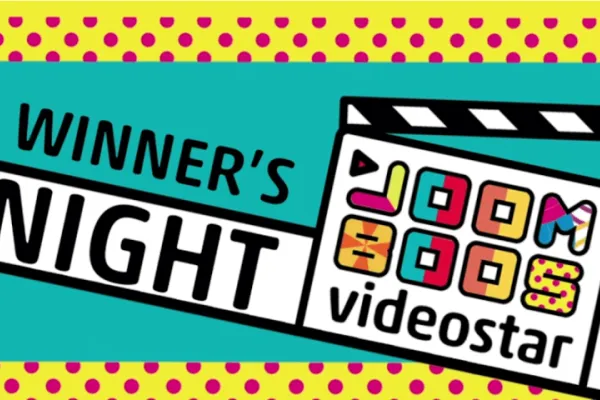 Details
Details
Zazie Lucke is VP of Global Marketing at one of the world's fastest growing digitally native media companies 'Quartz' with 19 million unique monthly visitors and more than 250,000 subscribers to the Quartz Daily Brief. Furthermore, it's seeing impressive results and renewal rates of 69% for its native advertising.
When we interviewed Zazie Lucke at the Native Advertising DAYS in November 2016, Quartz had recently conducted its fourth annual Global Executive Survey which surveys approximately 1,300 of the world's busiest professional people to understand how they use media and what types of advertising work for them. We spoke with her about the most important findings as well as what the future holds for Quartz -- and for the rest of the media industry.
Join us for this year's conference and meet inspirational speakers like Zazie Lucke. Read more.
Below are highlights from the interview which have been slightly edited for clarity.
Executives are still very open to advertising
"The most important thing when capturing the attention of the world's most busy and intelligent people is listening to what they need and what they desire from an advertiser or an advertiser's messaging. It's important to provide them with value, to listen to their business needs and to respond to their business needs with solutions and data and information, that can help them in their day-to-day professional lives.
If you're looking to feed the feeds of the global business elite, you really want to be creating content that works well on Twitter and Facebook.
The survey really enlightened us in a number of ways. The first way was that it gave us optimism that executives are still very open to advertising, especially content from brands, as long as it's delivering value. The second finding was that they're very specific about their use of social media. So while all executives or nearly all executives are using LinkedIn, it's not the primary driver or their primary social currency for news or business information.
RELATED: 4 Ways for Publishers to Keep Up with Facebook’s New Content Quality Standards
If you're looking to feed the feeds of the global business elite, you really want to be creating content that works well on Twitter and Facebook, which is much more prime real estate for the news cycle and business news and information."
Visual content works -- video less so
"Mobile is growing rapidly within the global executive elite constituency, according to the survey. In the last two years, we have seen mobile usage for news grow 50% among executives, but the growth of their interaction with advertising grow 100% over the last two years. In many ways, we're failing this audience from a mobile perspective by providing advertising that's much more intrusive than it is informative. Our focus should really be on providing value driven advertising in the mobile space.
Video was much lower down on the list than we had initially anticipated.
Another finding of the Quartz Global Executive Survey was one that was very intuitive; that executives are drawn in by highly visual content like charts, data, photos, and interactive elements. However, we were surprised to see that video was much lower down on the list than we had initially anticipated given the current fervour around video.
RELATED: Here’s The 3 Main Trends For Native Video
What was surprising as well, was that the number one most shared form of content was the long-form article among executives. At first, we scratched our heads but then realized that if you're going to invest the time and energy to read something of significant length, it's probably something you're likely to share. So the conclusion really was that it was important to either provide content on the long end, which provides the depth and context which makes it worthwhile or on the short end that provides the immediate visual takeaway. The mid length content generally tends to die on the social web."
The advertising experience and the editorial experience are equally important
"Quartz was founded in 2012 so it's four years old now and unlike almost every other media site that I know, it was born focusing equally on editorial experience and the advertising experience. The editorial experience did not come first leaving the advertising experience to the side or to be stuck in some 'somehow', 'some way'.
We consider our display almost as native as content itself.
Advertising was thought of in conjunction with editorial and so the entirety of the consumer experience was the focus of the development of the site and of all of our products. So that being said, we were working on a very user first principle when it came to advertising on the site.
It had to live up to the editorial expectations that our users had come to find from Quartz, so we focused on very value-driven advertising both in the native content arena but also in the display arena. We consider our display almost as native as the content itself because it too provides value to the reader and its experience. We talk a lot about providing our users and our viewers' experiences and not advertisements."
Advertisers want native advertising -- but they need guidance
"In our experience with our advertising partners, we've actually found a high demand for storytelling. Many, many advertisers have heard of native advertising, are interested in native advertising, but don't quite understand what it means or how to apply it.
RELATED: How Brands Create Content That Stands Out
Because of the way Quartz is constructed and the success that it's had telling stories, they come to us for our advice and are actually quite open to being led towards constructing a proper narrative and constructing information and data in the way that it is most resonant among our readers."
The traditional media model is devalued
"I believe we're at an inflexion point in media where we're moving from a traditional media model which valued the media above all and devalued creative as either added value or just a production fee to be carried on to the advertiser.
We need to build our businesses around a dual model.
We are now moving to a point where the creative is becoming more of the centre of what media companies are doing, and if you look to companies like Vice who have actually created separate companies to create creative that have their own P&L and are successful in their own right, I think that type of model is the future.
RELATED: How T Brand Studio Works With Native Advertising
T Brand Studio is also adopting a similar model where they're placing enormous value in the creative build. I think if we do not value the creative and we continue to only value the media, we will be selling ourselves short in the future. We need to build our businesses around a dual model where creative is just as valuable as the media and distribution that allows people to see and experience it."
Quartz will focus on more white label solutions
"For Quartz we're very focused on building out our creative capabilities across all different disciplines. We're building skills in design, in content, and in journalism and particularly skills in technology and innovation.
We're going to be focused on providing opportunities for advertisers that stretch beyond media.
As we move into next year (2017, ed.), we're going to be focused on providing opportunities for advertisers that stretch beyond media and that could run just on their properties alone, more white-label solutions that allow an advertiser to take advantage of the learnings and expertise that we have as publishers."
"We welcome brands as publishers"
"We are happy to see brands work to become publishers as well and we feel like we can only complement their efforts. I think it's important for brands to have their own voice. Some struggle with understanding how to communicate with readers in that way. They're not used to that type of communication and publishers have clearly been at that work for a very long time so there's a lot to be benefitted by brands having their own story but partnering also with publishers like Quartz to be able to tell that story in a way that really affects the reader."
DOWNLOAD E-BOOK: Learn all about native advertising trends in the news media industry



